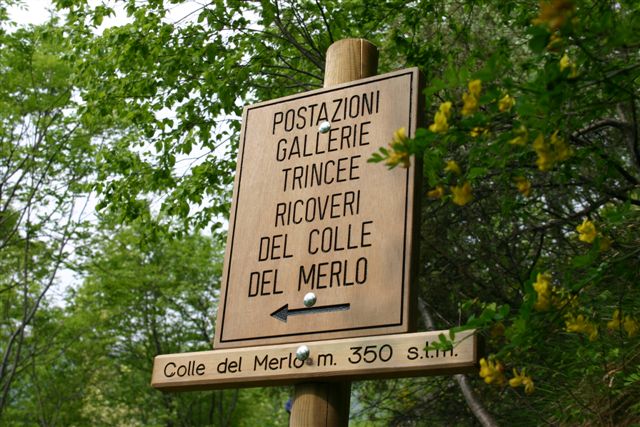Monte Grappa – trenches, tunnels, placements and the Sacrario war memorial
During Italy’s participation in World War One (1915-1918), fighting against the Austro-Hungarian Empire, Monte Grappa became a key location from November 1917 to October 1918, during the final phases of the war. In only a few months of war, a massive number of defensive structures were mounted on Monte Grappa, still to be found dotted across the whole mountain area, barracks, tunnels, trenches and positions. The most important structure erected by the Italian military engineers was the Galleria Vittorio Emanuele III. It is a truly grandiose military fortification, built in barely ten months, starting November 1917.
Trekking in Gallerie del Merlo
Estimated duration: 3 hours
Departure point: 150 m a.s.l.; observation point: 350 m a.s.l.
The route takes us along paths CAI 35 and 36 to visit some World War One (The Great War) sites.
Points of interest: historic testimony of the Great War and panoramic views across the Brenta Valley.
If conditions permit, you trek the paths with explanations from your guide and stops at the observation point at the summit and at the Galleria di Angelo.
The defence structures built for the Great War have recently been restored.
Features of the path
Mountains paths have a steep incline for rapid progress and do not afford panoramic views, avoiding tough mountain terrain only where necessary. The ascent/descent sections have steps cut in the rock. In some places, the steps are angled towards the summit, to make ascent easier and reduce the risk of falls, especially in icy periods in winter.
Historic features.
The network of tunnels and trenches bear witness to the vast importance of this rocky area in controlling the Brenta Valley and the Frenzela valley (Valstagna) during World War One, in the face of a possible invasion by the Austro-Hungarian Empire from the North.
These structures were erected from 1916 on to support defensive structures on Monte Grappa and maintain connection and continuity with established positions on the Asiago plateau, crossing the Brenta Valley. The most important structures were at Carpanè and Merlo, part of the forward defence system of Rivalta, later connected with the one on the other side of the river.
Covolo di Butistone
Covolo di Butistone is an ancient military fortification that closed off the Brenta Valley between Primolano and Cismon del Grappa up until the end of the 18th century, fulfilling the functions that were then delegated to Forte Tombion which was built in the 19th century. The Covolo was erected to defend one of the main communication routes between the Italian peninsula and Germany. It was composed of two parts: a customs house, where people paid taxes for goods that had been transported through there since Mediaeval times, and the military fortification that rose out of the cave. You can still see the ruins of the fortification, accessed then via a winch-operated seat, where the altar of St. John the Baptist, the crenellated battlements, the well, the cistern, the posts for culverins, the prison and the troop room are all clearly identifiable.

